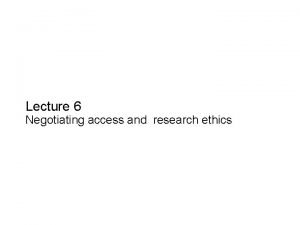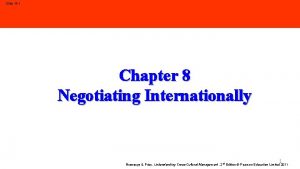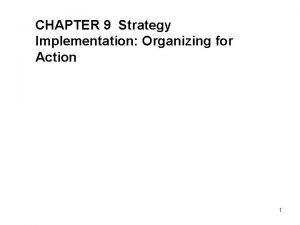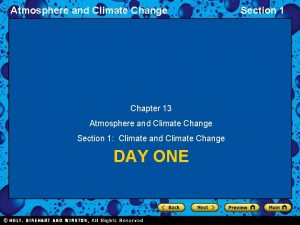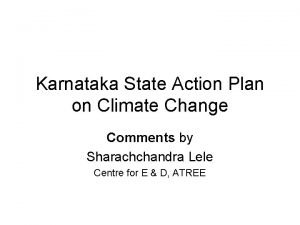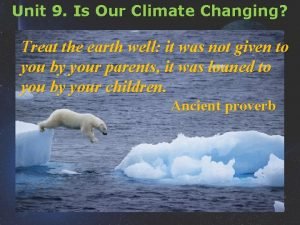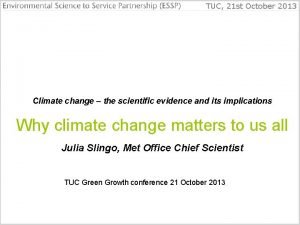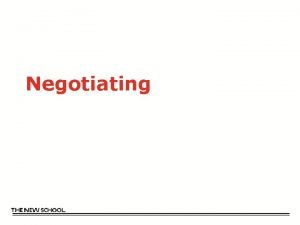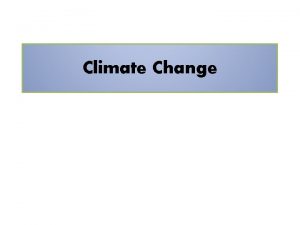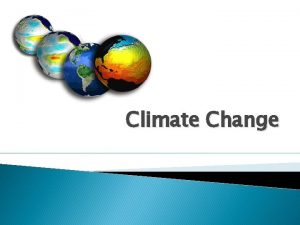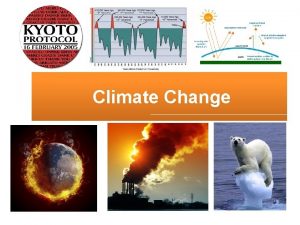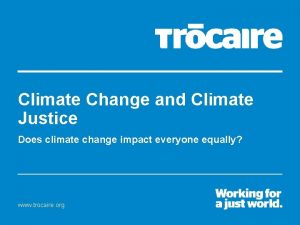Negotiating climate change Issues and options Christine Zumkeller


















- Slides: 18

Negotiating climate change - Issues and options - Christine Zumkeller Bonn – Cambridge, February 2008

Time to act Ban-Ki Moon, Secretary-General of the UN: 2007 turning point: climate change rose to the top of the international agenda a. b. Stern Review UN, IPCC, GA, „Bali“ 2008: time to take concerted action “Protecting the climate system for present and future generations, integrated with social and economic development“

Time to act Action needed at many levels: local to global Many different actors: Public, private, civil society Many roles, many ingredients Setting goals Planning for and achieving targets Mobilizing resources Enhanced awareness Implementing cooperatively Your role ? !

Negotiating climate change Knowing the context and links: climate change and sustainable development Sizing the problem: $ 500 bn per year, cost of inaction much exceeds the cost of action Willingness to move Using building blocks Scoping the issues Being bold and creative about options Agreeing on solutions

Issues and options The Bali Action Plan Using building blocks: Convention and its Kyoto Protocol – dual track Scoping the issues: the four components Mitigation a. b. Commitments or actions (legally binding and/or other? ) for industrialised countries Action for developing countries “supported and enabled by technology, financing and capacity-building” Adaptation Technology development &transfer Investment and Finance, Incentives

Issues and options under the Kyoto Protocol (KP) Targets for “Annex I” Parties – 2008 -2012 to be followed by targets for „subsequent commitment periods“ (Art. 3. 9) – legally binding Accountability and accounting rules Compliance with cost-effectiveness Market created – price signal emerging “Cooperative”/ “flexible” mechanisms Joint implementation (JI) among Annex I Emissions trading (ET) among Annex I Clean development mechanism (CDM): cooperation “Annex I” and “non-Annex I”

Results To date: 920 registered CDM projects 1. 16 billion CERs expected frm existing registered projects to the end of 2012 In pipeline: > 2, 900 projects (including registered projects) > 2. 6 billion CERs expected to the end of 2012 (assumption: no extension of crediting periods) Map and statistics accessible at http: //cdm. unfccc. int/ Status: 8 February 2008

Results CDM the largest CO 2 offset system in the world 920 registered projects to date approx. additional 2000 projects in pipeline 49 countries 115, 382, 000 CERs issued (certified emission reductions) 2. 6 billion CERs expected to end of 2012 32% unilateral projects Status: 8 February 2008

Chart from UNEP RISOE

Investment, financial flows CDM projects that entered pipeline in 2006 expected to result in USD 25 billion in capital investment (almost double the USD 14 billion in total investment leveraged through GEF in the climate change area since it started) CDM renewable energy and energy efficiency projects registered in 2006 expected to result in USD 5. 7 billion in capital investment (about triple the ODA support for energy policy and renewable energy projects in the same countries. Almost as much as private investment in renewable energy and energy efficiency (USD 6. 5 billion in 2006) in the same countries) Condensed from the report of the CDM Executive Board to the COP/MOP 2007 <http: //unfccc. int/resource/docs/2007/cmp 3/eng/03 p 01. pdf>, page 4.

Issues and options until 2009 Agreeing on process and timetables: 20082009, start with work programme, 30 March-4 April 2008, little more than 12 months left for blueprint Working towards agreement on: Targets for second commitment period for Annex I Determination of comparability of efforts Incentives for action of developing countries, mechanism for reducing deforestation, size of CDM Equity in burden-sharing (who pays, for what, when) Dynamic political environment

Your role 15 -year window of opportunity for decisive action to avoid temperature increase beyond 2 degrees Celsius/concentration level above 550 ppm (375 now) by 2050


Figure 1. 4

Your role. . . Cost of inaction. . . Cost of action – think of opportunities

Your role Building trust Recognition of mutual interest Cooperation

Your role Finding the right mix Finding the balance

Your role You are privileged to be imaginative, courageous and non-parochial in thinking behaviour communicating Cultivating comprehensive knowledge, compassion, good judgement and balance Assuming enlightened leadership Business-as-usual won't do Time to act. Thank you.
 Climate change 2014 mitigation of climate change
Climate change 2014 mitigation of climate change Negotiating access and research ethics
Negotiating access and research ethics Chapter 10 negotiating intersections
Chapter 10 negotiating intersections Sap license negotiation
Sap license negotiation Chapter 7 negotiating intersections
Chapter 7 negotiating intersections At an open or uncontrolled intersection, yield if _____.
At an open or uncontrolled intersection, yield if _____. Weiss’ strategic framework for negotiating
Weiss’ strategic framework for negotiating Pooled negotiating power
Pooled negotiating power An uncontrolled railroad crossing usually has
An uncontrolled railroad crossing usually has Chapter 7 negotiating intersections
Chapter 7 negotiating intersections Pooled negotiating power
Pooled negotiating power Climate change meaning and definition
Climate change meaning and definition Chapter 13 atmosphere and climate change section 1
Chapter 13 atmosphere and climate change section 1 Chapter 13 atmosphere and climate change
Chapter 13 atmosphere and climate change Persuasive essay about global warming
Persuasive essay about global warming Karnataka state action plan on climate change
Karnataka state action plan on climate change Brainpop climate types
Brainpop climate types Unit 9 climate change
Unit 9 climate change Conclusion of climate change
Conclusion of climate change

